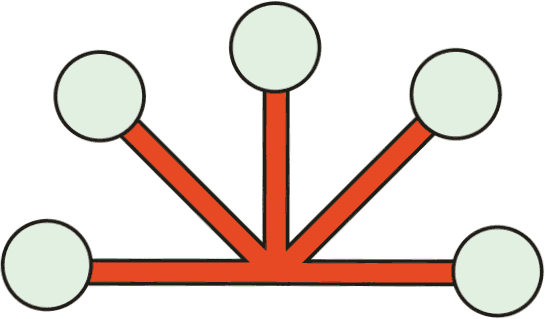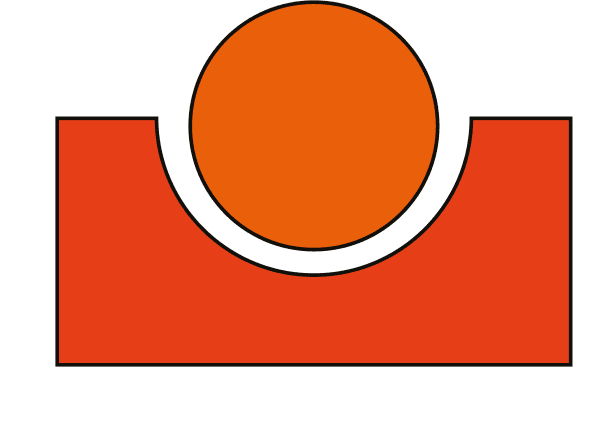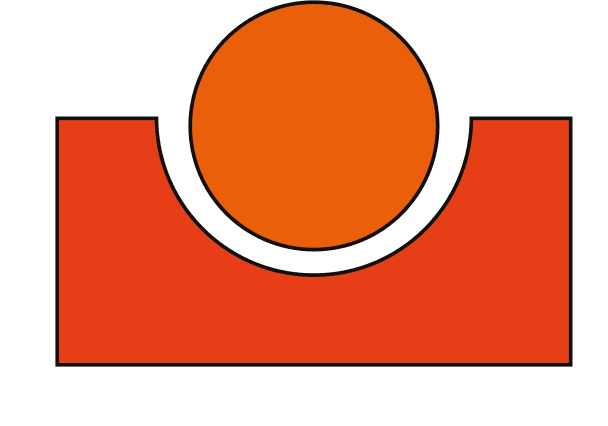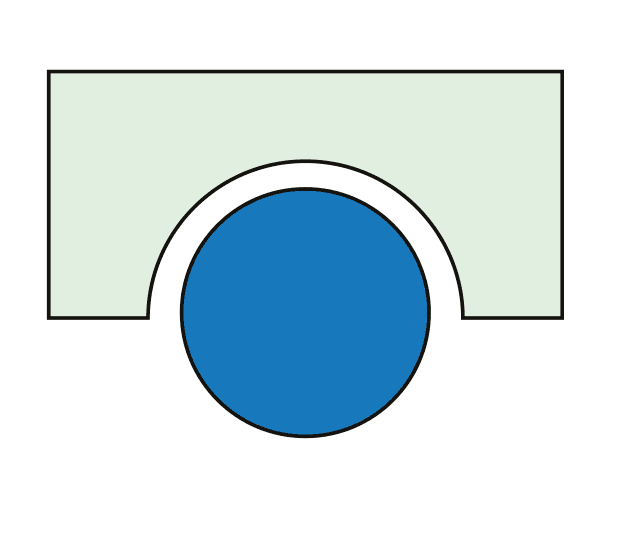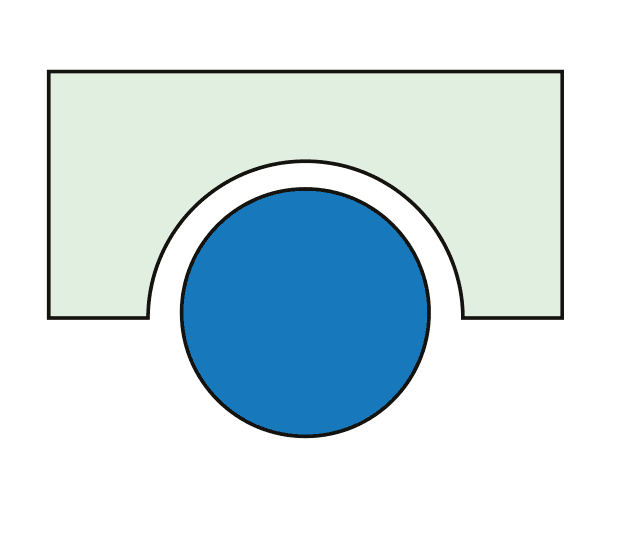The Evolving the Work Issue
Taking a step back to look forward
Not sure where to start? This guide can help.
While The Shipping Great Work Issue focuses on the day-to-day work, this zine covers ways to take a step back and evaluate your work and your organization more holistically. While leaders are ultimately responsible for setting the direction of the company, getting input from your entire team will not only help you pick the right stuff (they’re likely much closer to the work than you are), it can also be a powerful way to engage your employees in making improvements to the company together. And, these moments can be as useful to strategy as they are morale.
By reliably carving out dedicated space to do this kind of deep introspection and ambitious blue-sky thinking, you can tap into parts of your employees in a way that will periodically light everyone up without distracting them from the critical focus on their day-to-day work.
It also helps take the pressure off deep thinking when the team should be executing. If everyone trusts these moments of reflection are coming, when big ideas inevitably come up day-to-day, they can easily be put to the side for now, so everyone can stay focused. Plus, by running these processes, you’ll probably find yourself super impressed with the caliber of your team, proud (and maybe even a little surprised) with how much you’ve accomplished, and even more energized about what you can build together in the future.
There’s a way to do all of these things that are check-the-box-lip-service-y and there’s a way to do them that meaningfully influences strategy and behavior. If you are not prepared or inclined to take what you’ve learned from these processes and use them to guide work, do not do them. But, if you’re ready to take a big picture look at how things are going with the help of the smart ambitious creative people around you, here are some ideas for ways to reflect and evolve what you work on and how you work on it.
Other issues
Not sure where to start? Select one or more tags below to filter the content of this zine:
Looking for:
- Nuts and Bolts
- Wrenches and Hammers
- Factory Favorites
- Recipe Under Development
Kool-Aid Serving Size:
- Kool-Aid Gulp
- Kool-Aid Sip
My role:
- Company Leader
- Crossfunctional Influencer
- Domain Expert / Team Lead
- Operator
Get more details on zine filters here
Filter descriptions
Looking for:
-
Nuts and Bolts
Foundational mechanisms to get started with. Most great organizations rely on their own version of this.
-
Wrenches and Hammers
Supplemental mechanisms to do more with. Many great organizations use these to close gaps or respond to challenges.
-
Factory Favorites
Lesser-utilized tactics that more companies could benefit from trying.
-
Recipe Under Development
Research on best practices and potential impact is still underway.
Kool-Aid Serving Size:
-
Kool-Aid Gulp
The highest-impact, furthest-reaching tactics for everyone to engage with.
-
Kool-Aid Sip
Nice-to-have or opt-in tactics for smaller groups to experiment with.
My role:
-
Company Leader
Someone with direct influence over the direction of the company and what is brought onto the company stage.
-
Crossfunctional Influencer
Someone who makes decisions across multiple teams or functional groups.
-
Domain Expert/Team Lead
Someone with strong command of a specific topic and/or the leader of a functional group.
-
Operator
Anyone getting work done with a command of the company’s values/standards and the inclination uphold them.
REFLECTIONS ON THE WORK
Knowing where to go starts with an honest evaluation of where things stand today. At some set cadence (probably annually), there is a set of useful reporting that’s worth doing. These are proactive mechanisms where the goal is simply to learn. It’s likely that the reflections will lead to inputs into major company decisions and ensure you don’t get caught off-guard by anything brewing inside or outside your company. This chapter provides some ideas for reflection-focused reports that can be a great forcing function for you and your team to stop and think for a moment.
User Insights Report
What we know about our users and where they're going
- Make this report as forward-looking (opportunities, risks) as much as it evaluates the current state.
- Incorporate qualitative and quantitative user data, sales conversations, support tickets, and user research interviews and surveys
- Make this a crossfunctional effort between go-to-market and product/eng teams.
HOT TIPS
- To inform product planning, Front publishes their roadmap publicly and allows users to vote on it.
COMPANY STORY
- Consider including
- User qualities (demographic, psychographic)
- Funnel performance
- Buyer journey(s)
- Feature users
- Feature satisfaction
- Magic moment
- Churn moment(s)
- Where to go in the future (products/market)
- Stories from important users
TEMPLATE
Business Health Report
How our company and business is doing
- The goal should be to encourage clear-eyed awareness about the health of the business. Ideally, it instils both a confidence in the opportunity ahead and fear that if the company doesn’t execute well, it will not survive.
- The P&L + company metrics is a good place to start. Try sharing it with the company, as is, and pairing it with a guide on how to read and interpret it. It’ll encourage better literacy about the business and make it easier on the team or individual responsible for sharing this out. Since the P&L is just a snapshot of a moment in time, pair it with metrics that are more forward looking regarding the company’s priorities.
- Everyone at the company should understand how the company makes money and how the business is doing. Reinforce this by talking about the health of the business in very specific terms at company-wide forums.
HOT TIPS
- Stripe’s CFO held training sessions with employees on how to read the P&L, and he used the real data to do it.
COMPANY STORY
Competitive Intelligence Report
What our competitors are doing that we know be aware of
- It’s critical to tease apart the difference in the positioning of the product and the product itself. The product and the marketing of the product are two very different data points.
- You can also use competitive intelligence to answer a question you have about your approach. Take your question and see if you can piece together how some of your closest competitors have solved it.
- Relatedly, you may have answered a question in different ways. What can that teach you about relative performance? Or, you may have answered the question in the same way but are getting different results. Why?
- Don’t just Google around for answers. Don’t do anything illegal but be sure to talk to users, use the product, get a demo from the sales team, etc.
- If you are inclined to make a reactive decision that results in a meaningful change to your strategy based on something you learn through this report, make sure you understand why you are making that decision. Is it for the good of the product? Is it for fear of a competitor outpacing? Is it for PR/optics?
- This report is ideally centralized for the entire company to take advantage of. But, take an expansive view of competition when you do it; companies may compete with individual parts of your product without competing with your entire product, overall.
- Orient this report on things that could change behavior (like a new product commanding a surprising amount of revenue, new features that are causing the company to lose sales deals, or a curious role opening up that might suggest a strategic investment).
HOT TIPS
- After Square started posting huge revenue numbers for their lending product in their quarterly earnings reports, many fin tech companies sped up development on their own offer (ex- Stripe, PayPal, Shopify).
- Amazon has a full team dedicated to this. They are constantly buying and testing products and rigorously documenting their speed and quality. The goal is to find any competitors doing a *better* job than Amazon on, and if so, how.
COMPANY STORY
“Competitors are rarely what kills startups. Poor execution does. But you should know who your competitors are, and tell the YC partners candidly what your relative strengths and weaknesses are. Because the YC partners know that competitors don’t kill startups, they won’t hold competitors against you too much. They will, however, hold it against you if you seem either to be unaware of competitors, or to be minimizing the threat they pose. They may not be sure whether you’re clueless or lying, but they don’t need to be.”
–Paul Graham, Billionaires Build
RESOURCE
- Consider including
- New entrants into the space
- Business performance of existing competitors
- Changes to competitors product
- Changes to competitors positioning
- New users acquired
TEMPLATE
- Strive for making this a joy to read over a cup of coffee. Give it earnestness, personality, and story. If it’s fun for you to write, it’ll probably be fun for your employees to read.
- Bias towards more storytelling than reporting. It’s a great opportunity to humanize the company and its goingson. Do this by drawing connections between things that might feel dissimilar in the run of work, helping employees see themselves and their work in the overall strategy, sharing powerful anecdotes of things that happened within the walls of the company and the impact you had on users, and highlighting glimmers of progress towards achieving your long-term goals.
- To maximize coverage, source liberally from work across the organization. The magic of the letter will lie in how well you can weave it all together into a coherent narrative.
HOT TIPS
This is Amazon’s first public shareholder letter from 1997. It is included for reference at the end of every subsequent year’s shareholder letter.
Amazon.com passed many milestones in 1997: by year-end, we had served more than 1.5 million customers, yielding 838% revenue growth to $147.8 million, and extended our market leadership despite aggressive competitive entry. But this is Day 1 for the Internet and, if we execute well, for Amazon.com. Today, online commerce saves customers money and precious time. Tomorrow, through personalization, online commerce will accelerate the very process of discovery. Amazon.com uses the Internet to create real value for its customers and, by doing so, hopes to create an enduring franchise, even in established and large markets.
An excerpt from Netflix’s Q1 2020 shareholder letter, written during the early days of the global Coronavirus pandemic.
From the introduction: In our 20+ year history, we have never seen a future more uncertain or unsettling. The coronavirus has reached every corner of the world and, in the absence of a widespread treatment or vaccine, no one knows how or when this terrible crisis will end… At Netflix, we’re acutely aware that we are fortunate to have a service that is even more meaningful to people confined at home, and which we can operate remotely with minimal disruption in the short to medium term. Like other home entertainment services, we’re seeing temporarily higher viewing and increased membership growth. In our case, this is offset by a sharply stronger US dollar, depressing our international revenue, resulting in revenue-as-forecast. We expect viewing to decline and membership growth to decelerate as home confinement ends, which we hope is soon.
COMPANY STORY
- Consider including
- Things that got started this year
- Things that gained traction this year
- Glimmers of progress towards your long-term vision/mission
- Progress on the things you planned to do
- Progress on key metrics
- General health of the business
- What you learned this year
- Improvements to the organization (new systems/processes, new leaders, etc.)
- Stats about your employee base (# new people who joined, locations they work from)
- Good failures/things you were wrong about
- Stories of specific users you made an impact on
- Examples of great work
- Things that happened in the broader ecosystem and how you’re thinking about it
- Competitive insights
- Company identity-shaping moments
TEMPLATE
Company Growth Review
Evaluating whether growth is happening in the places and in the right ways
- When you look at the composition of your employee base, do you like what you see?
- What about when you look at the distribution of people in management and leadership roles?
- Promotions?
- Departures?
- Are there meaningful differences in employee satisfaction or based an any demographic or psychographic qualities?
- While evaluation is a backwards-looking mechanism, it can be used to inform forward-looking practices and programming at your company (think: hiring, onboarding, mentorship, etc.).
HOT TIPS
Spotting and Rewarding Great Work
How to amplify the best of what the team is doing
- This is different than a ‘hi five’ or a ‘thanks for doing your job.’ This is about pointing out truly exceptional work.
- Bringing great work onto the company stage, and explaining what makes it great (to those who are doing it and to the rest of the company) will help everyone internalize what great looks like at your company.
- Ways to bring this work to the company stage include:
- Have those who are doing the work present in All Hands
- Email to the company
- Spot bonus
- Promotions
- Humans are great at pattern matching so the more you show off and the more you explain the nuance of why something is great, the better everyone will understand how to do it themselves.
- Communicate this directly to the person doing the work. Maybe even include their manager, too. This makes people feel great and want to do more of it.
- Create an #inspiration channel to post great work or work you admire from outside the company to continue to train your team up on what great looks like.
- If there are particular kinds of great work or virtues you want to specifically encourage (ex- speed, polish, creative solution), create a particular mechanism around that virtue.
- Encourage employees to point out each other’s great work, too.
- If you see someone nominating work as great work, and you don’t agree, try to intervene kindly and explain why. It’s important not to dilute the mechanism!
HOT TIPS
- Peer recognition mechanisms for great work
- Amazon has a “just do it” award in which they pass a pair of sneakers around
- Ford Smart Mobility Greenfield lab has a tradition of presenting a team member with a pair of wild or weird socks for especially great work. The tradition started when an employee called solving one of their problems “harder than putting socks on a chicken.”
- Asana has a “passing of the flag” ceremony. Every All Hands, employees pass the flag to another team or individual to celebrate their work.
- Uber issued the “Nikola Tesla unsung hero award” for employees that did exceptional work.
COMPANY STORY
IMPROVEMENTS TO THE SYSTEM
There’s a phrase that entrepreneurs like to use when talking about building products and teams; “talent is equally distributed, opportunity is not.” Think about your organization in the same terms. You know this already but I’ll remind you. Great ideas can come from anywhere; all roles, tenures, experience levels, backgrounds, perspectives.
Great organizations and great leaders know how to get into the crannies of the organization, bring ideas forward, evaluate them on their merits, and support the great ones. Employees aren’t likely to raise ideas of this scale unless you ask them directly and then create a safe space for them to share. These are the mechanisms by which you can reliably do that.
Tinker Time (aka Hackathon)
Creating space for employees to work on company-impacting projects they can’t or don’t get to in their day-to-day work
- Wrap up with demos or presentations (and maybe even a few categories of awards) so that everyone gets to see what everyone else worked on.
- This is also a great way to help people who might not usually get to work together connect over something they care about, which is the foundation for all meaningful work relationships.
- The expectation is that most regular work stops (no meetings, no expectation to ship, etc.)
- (Recommended for teams that are still relatively small), an offsite- maybe even an overnight one- can be a very effective catalyst for getting work done and building cross-company connections.
- User-facing teams like Sales and Support can use some extra kindness. Tickets and deals don’t stop just because your company is doing a Hackathon so give ‘em some extra love while the rest of the company is at play.
- Make special swag.
- Once or twice a year is a good cadence.
HOT TIPS
- Atlassian calls their’s ShipIt Day (more on their company website)
- Figma takes a whole week twice a year for Maker Week (a peek behind the curtain here and here).
- 3M pioneered requiring employees to spend 15% of their paid hours to a personal interest as part of their “innovate or die” initiative. Google popularized this with “20% projects” (in reality, they’re closer to 120% projects). Famous 20% projects include: Gmail, AdSense, Google News, and Google Shuttles.
- Adobe Kickbox is a small, red cardboard box containing everything an employee needs to generate, prototype, and test a new idea. Marc Randall, Adobe’s VP of Creativity, created it to empower more people around the company to build.
COMPANY STORY
Edit the Org
Encouraging employees to thoughtfully request the updates to the company only leaders can make
- Create a dedicated process that encourages action-oriented solutions (and not just complaining). Make it high-ish lift so that actually thinking deeply/caring about the problem is a prerequisite for submission.
- It’s critical that this process only apply to systematic company-level work and process. Employees should always, always have the resources and support to make local improvements to their own corner of the organization.
- Have a process for responding thoughtfully to these reports. Otherwise, it will feel like an empty suggestion box, which may be even less satisfying.
- The ideas are as valuable as the signal to your team that ideas from anywhere in the company are valued.
- Center this process around a written document instead of a synchronous presentation so that many people across the organization can easily jump in with feedback.
HOT TIPS
- Pixar dedicated an entire day to this; they called it Notes Day and asked every employee to participate in a full day of activities dedicated to coming up with improvements to the company.
- Basecamp has “pitches” wherein employees publish ideas for a new feature, feature change, or any other development to the entire company. Every pitch is read by the entire product team. Some are picked up.
- In the early days at Google, founders Larry and Sergey hosted an “ideas meeting” where anyone at the company could pitch an idea.
- Through Google’s annual Bureaucracy Busters program, Google employees identify, vote on, and then fix their biggest frustrations.
COMPANY STORY
Core Sampling
When and how employees are consulted on meaningful work
- The outreach can be informal (ie- a Slack ping to get feedback) or formal (ie- calling a meeting with trusted individuals) and the group can (and probably should) rotate.
- Consider getting feedback on any email of significance going out to the entire company. Even if you’re not going to make any changes, it’s a great way to get a pulse on how it will be received and get ahead of any reactions.
- It’s also a good way to create a fleet of ground-level advocates once it is launched; people who are involved- even only if a little bit- in the development of something are far more likely to defend or advocate for it later.
HOT TIPS
- At Reddit, employees organized into topic-focused “guilds” (ex- ML, Kubernetes, Frontend) that met every two weeks. The goal of the meeting was to broadcast learnings/best practices and get early feedback on ideas/projects.
- At Pixar, when a director or producer feels like they need some fresh ideas or feedback, they convene their “brain trust” (a group of other directors/producers and anyone else they think would be valuable) and show the current work-in-progress version of what they’re working on. What follows is a lively two-hour give-and-take discussion. It’s all focused on making the movie better. No ego, no politeness, just ideas.
COMPANY STORY
Leader Rotations
Leaders temporarily acting as individual contributors to get ground-floor-level experience of how the work gets done
- Build a lot of structure into this before it happens. Make there is a specific project, with clearly defined inputs and outputs waiting.
- Share two versions of the write-up on how it went; one where the audience is leaders on the target team (that goes into great detail about observations and ideas for improvements) and one where the audience is the entire company (that gives everyone a glimpse into what life on the target team is like).
HOT TIPS
- At Stripe, CEO Patrick would rotate onto engineering teams to see how things were going.
- At Forward, every leader (mostly by accident) spent time as the Head of People. This built great empathy for the opportunities and challenges of not only that function and helped them get a better sense of what they needed from a more permanent leader in that function.
COMPANY STORY
Listening Tour
Answering big questions by getting groups of employees together
- For decisions and topics that will meaningfully influence employee experience, convening groups of people for feedback can help 1/get to the right answer 2/inform your comms when you do roll out the decision by getting ahead of common questions and 3/bring people along in a way that builds champions 4/reinforce that you listen to employees.
- Make the groups as diverse as possible (demographic, psychographic, tenure, role, org, etc.) and encourage discussion. This will also help everyone see for themselves how diverse the perspectives are on a given topic in a way that will build empathy and understanding for wherever the decision ultimately lands.
HOT TIPS
Moonshots
What your company could take a big swing on, but probably shouldn't
- Create a shared document with one very simple prompt and let it rip: “what big thing could we plausibly do… but probably shouldn’t?”
- It should be very low-lift to submit an idea (ie- a sentence describing the idea is sufficient) and all ideas should be submitted to the same place. This way, the process is inherently inclusive, generative, and collaborative.
- It’s not unlikely that two people in different corners of the organization will have had the same idea. This process creates a wonderful way to connect colleagues over ideas they didn’t know they shared.
- You probably don’t want zero (your company was likely founded on at least one), but you definitely don’t want too many.
- Dan McKinley calls these innovation tokens. “You can spend these however you want, but the supply is fixed for a long while. You might get a few more after you achieve a certain level of stability and maturity, but the general tendency is to overestimate the contents of your wallet.”
- Leaders should be the ones deciding how many big bets you’re taking, which ones to select, what kind of resources those big bets will get (time, people, money), and how you will evaluate their success and potentially act on their failure.
- Having a reliable forum for ambitious blue-sky thinking helps employees stay focused on the work in front of them in between.
HOT TIPS
- Google X (famously nicknamed the Moonshot Factory) requires that anything they work on sit at the center of the Venn Diagram on Huge Problem, Radical Solution, Breakthrough Technology. If a proposal does not hit all three, it won’t be worked on.
- Stripe Atlas and Stripe Issuing were famously on the “Moonshots” several years before they were brought to life. There were many, many more “boring” ones that were shipped too.
COMPANY STORY
Catastrophes
Encouraging employees to surface holes in the product that could potentially be company-ending
There’s more I’d like to learn before I make any suggestions. If you have any stories, learnings or best practices you’d like to see included, I hope you’ll leave a comment.
IDEA KINDLING
Spotting and Improving Work Below the Quality Bar
How to course-correct any work that is not meeting the company's standards
There’s more I’d like to learn before I make any suggestions. If you have any stories, learnings or best practices you’d like to see included, I hope you’ll leave a comment.
IDEA KINDLING





